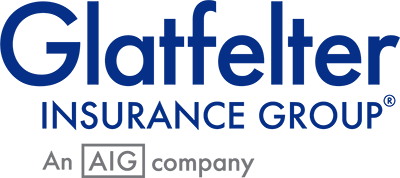Use these tactics to make your meetings meaningful and productive.
Across all industries, meetings are a necessity. And that's ok--there's lots of power in bringing people together in-person to brainstorm and discuss topics and initiatives. Some of the very best company ideas are discovered this way.
Meetings with clients are shown to be very productive, too. One 2017 study from Mahdi Roghanizad of Western University and Vanessa Bohns of Cornell University noted that when requests are made in-person rather than via email, they are 34 times more successful. Bohns also noted in Harvard Business Review that you would need to request something of 200 people via email to get the same results as asking just six people the same request in person.
DON'T WASTE YOUR TIME
Despite these impressive stats on the power of in-person meetings, you don't often hear co-workers or clients talking about how excited they are to go to them. You also don't typically hear people leaving a meeting exclaim, "Wow! That was the best meeting. I'm so glad I was in it!" In fact, one salary.com study reported that workers named meetings as "the biggest distraction and waste of time presented by the workplace."
It's no secret that time is sacred in all business organizations. It's a critical resource that way too often gets squandered. Although employees attach such negative connotations to meetings, time spent in them has skyrocketed across the board since 2008. The Muse shared these staggering statistics:
- There are 25 million meetings per day in the U.S.
- More than $37 billion per year is spent on unproductive meetings
- Middle managers spend about 35% of their time in meetings
- Upper management spends about 50% of their time in meetings
- Executives consider 67% of meetings to be failures
MAKING MEETINGS MEANINGFUL
Since meetings are a necessary part of company culture and are certainly here to stay, it has become more important than ever to find ways to make them productive. The good news is that facilitating impactful meetings is a skill that can be regularly practiced and honed. Quality, purposeful meetings can help you and your co-workers make amazing professional strides. Consider an investment into improving the effectiveness of your meetings as one of the most important investments you can make for your business.
There are a few key ways to get the most out of your meetings. By working to implement these tips and tactics during every meeting, you can continually increase your success and positive outcomes. (You may even hear co-workers or clients talking about how valuable meetings are for them.)
- Keep things short and sweet - No matter the meeting topic or number of attendees, aim to schedule it for 30 minutes or less. In "The Magic of 30 Minute Meetings," The Harvard Review notes that this encourages attendees to be hyper-focused (and more aware of how to make the most of their time.) "The compressed, focused coaching session hones the skill of getting to the point quickly, focusing on the most essential elements of a situation, and taking action." In addition, attendees are shown to listen better in 30 minute meetings (as we generally find it easier to focus when things move at a faster pace,) and pose more thoughtful questions or responses. Maybe, though, the best reason to have shorter meetings is your bottom line: saving time definitely saves money.
- Be timely - In keeping with many of the points illustrated in tip #1, it's also critical that the meeting takes place on time and ends on time. This sets an important precedence and ensures that everyone will watch the clock and make the most of the time that has been allotted. By imposing strict time limits, you will increase the quality and productivity of your meeting time and time again.
- Pass the torch - Whether you do this figuratively or metaphorically, it is important to avoid long monologues during meetings, or hosting meetings run entirely by a single person. By keeping them more collaborative and encouraging everyone to speak, you will increase the amount of ideas discussed and the amount of perspectives considered. Engaging all participants shows them that what they have to say is valued, and encourages them to voice their thoughts at all times. Not only does this make the tone of the meeting more positive and encouraging, but it keeps everyone energized and tuned-in.
- Include expectations & action items - Carefully prepare materials prior to the meeting that will allow your co-workers or clients to consider the topics that are going to be discussed and to better prepare for it. This notification could be as formal as an agenda or as informal as a quick phone call or email note. Likewise, come prepared to leave the meeting with a list of actionable items that should be accomplished based on what you've discussed.
- Scrutinize the subject matter - The true key to hosting important, quality meetings every time is questioning their necessity. Before scheduling a meeting, think about the topic at hand and ask yourself if the meeting is truly necessary. Explore alternative options to determine the best course of action. Co-workers and clients will quickly learn that when you schedule a meeting, it has been well-thought through and is necessary, and they will regard the event as more important.
If you're like most professionals today, you spend a substantial part of your work week in meetings. This is a hard reality. With a few tweaks, though, the meetings we dread can become events that we look forward to and maybe even get excited about. Even better, they can help us increase our success and productivity instead of slowing us down.
How do you keep your meetings productive? Fill us in the comments below, and subscribe to our blog to read more!

Lindsey Elias, Marketing
As our Marketing Content Manager, Lindsey is passionate about producing quality content. When not at the office or planning her next Disney getaway, she loves hanging with her husband, family and fur babies and indulging in the two c's: carbs & coffee.
DISCLAIMER
The information contained in this blog post is intended for educational purposes only and is not intended to replace expert advice in connection with the topics presented. Glatfelter specifically disclaims any liability for any act or omission by any person or entity in connection with the preparation, use or implementation of plans, principles, concepts or information contained in this publication.
Glatfelter does not make any representation or warranty, expressed or implied, with respect to the results obtained by the use, adherence or implementation of the material contained in this publication. The implementation of the plans, principles, concepts or materials contained in this publication is not a guarantee that you will achieve a certain desired result. It is strongly recommended that you consult with a professional advisor, architect or other expert prior to the implementation of plans, principles, concepts or materials contained in this publication.
This blog post may contain the content of third parties and links to third party websites. Third party content and websites are owned and operated by an independent party over which Glatfelter has no control. Glatfelter makes no representation, warranty, or guarantee as to the accuracy, completeness, timeliness or reliability of any third party content. References to third party services, processes, products, or other information does not constitute or imply any endorsement, sponsorship or recommendation by Glatfelter, unless expressly stated otherwise.
Related posts
From natural disasters to crisis situations, community-focused organizations face unique and dangerous risks during their missions.
Learn to create a memorable client experience from the customer service experts at Trader Joe's.
Questions you can use to help you determine if an insurance Carrier, Program Manager or MGA might be the right fit for your book of business.






Submit a Comment